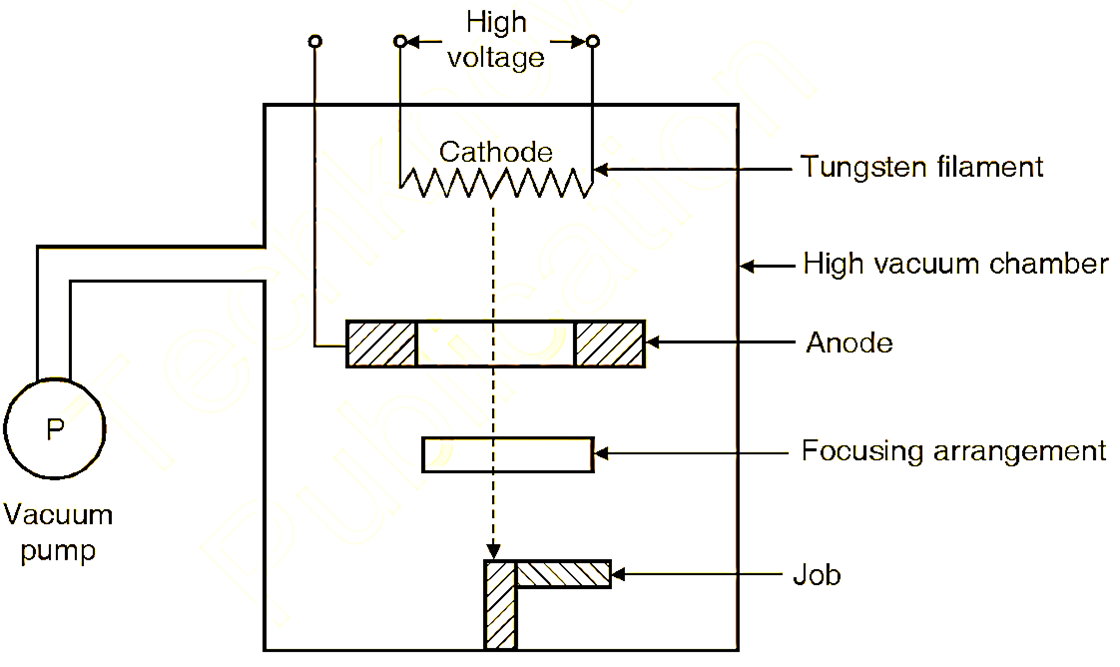In the electron beam welding process, an electron is made to travel in vacuum at high speed by exciting it. This electron strikes the surface of the metal to be welded. The impact gives rise to heat energy which melts the metal and thus welding is obtained.

Fig. 1: Electron Beam Welding.
Since, operation is carried out in vacuum there is no need of inert gas, electrodes, flux etc. The arrangement is shown in Fig. 1. Tungsten filament acts as cathode and emits electrons when high voltage supply is given across it. These electrons are accelerated and are focused on the job with the help of focusing arrangement. The temperature obtained is about 2500°C which is sufficient for welding the job. The major advantage of this type of welding is tremendous penetration. This technique is used for welding the accessories used in aerospace, automobile, airplane, etc.
Advantages of Electron Beam Welding
- A high quality of weld joint is produced in high speed by this welding process.
- Different thickness of material can be welded easily.
- A precision welding joint is possible.
- Much deeper weld joint is obtained in single run.
- Seam and butt welds can be performed on metals as thin as 25 μm.
- It can give same performance as TIG and plasma welding.
Applications of Electron Beam Welding
- This process is used in joining of reactor components.
- It has large use in spaceship building.
- It is used in automobile engine component welding.